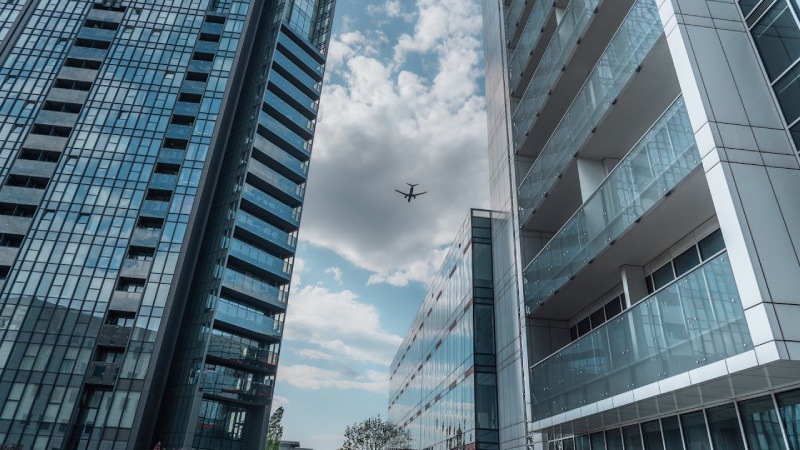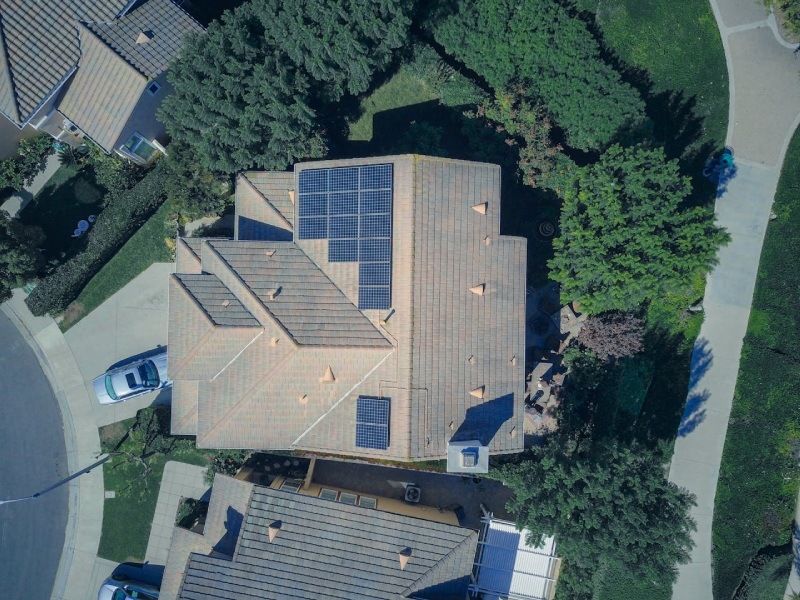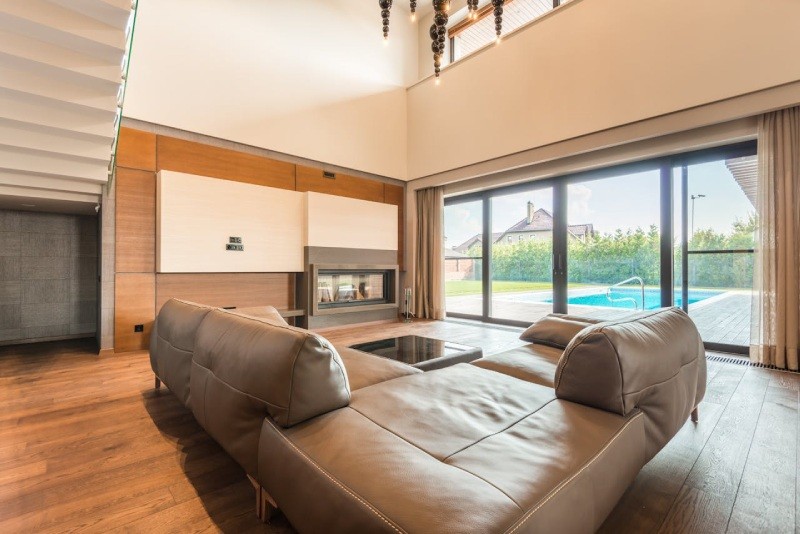
As we move further into the 21st century, the design and construction of residential buildings are undergoing dramatic changes. These shifts are driven by technological advancements, sustainability concerns, and the evolving needs of urban populations. In 2025, we can expect residential buildings to reflect the latest innovations and focus on enhancing residents’ quality of life through improved functionality, energy efficiency, and environmental sustainability. This article explores the key trends shaping the future of residential buildings, highlighting the technologies, materials, and architectural designs that will define the homes of tomorrow.
1. Sustainable and Energy-Efficient Buildings
Sustainability is no longer a buzzword but a critical consideration in the design of residential buildings. By 2025, the construction industry will see a significant increase in energy-efficient buildings designed to minimize environmental impact. With the global emphasis on reducing carbon emissions and combating climate change, residential buildings must comply with stricter environmental regulations and standards.
1.1. Green Building Materials
One of the most prominent changes in the residential construction industry is the widespread use of eco-friendly building materials. By 2025, we can expect a surge in the adoption of sustainable materials such as bamboo, recycled steel, and low-carbon concrete. These materials not only help reduce the carbon footprint of buildings but also improve the overall environmental performance of residential structures. An experienced builder will be crucial in selecting and implementing these materials, ensuring that new constructions are durable and environmentally responsible. Additionally, new materials are being developed to improve the insulation properties of buildings, thus reducing the need for heating and cooling. This will help residential buildings achieve higher energy efficiency and lower energy costs.
1.2. Solar Energy Integration

Solar energy will remain a key feature in residential buildings by 2025. Solar panels and solar roofs are already becoming standard in many new homes, and in the future, they will be even more integrated into the architecture. The widespread use of photovoltaic (PV) solar panels will allow residential buildings to generate electricity, contributing to energy independence and lower utility bills for homeowners.
Moreover, the development of solar windows and solar-absorbing materials will make it possible to generate energy without compromising aesthetics or functionality. By 2025, it will be common for residential buildings to feature solar-integrated building facades, roofs, and windows, ensuring that solar energy is harvested throughout the building’s structure.
1.3. Smart Energy Systems
The future of residential buildings will also see the widespread use of smart energy systems. These systems allow homeowners to monitor and control their energy consumption in real-time through smart devices and apps. In 2025, smart thermostats, energy-efficient appliances, and home automation systems will work in tandem to optimize energy usage, reduce waste, and lower overall energy costs.
For example, smart thermostats will adjust heating and cooling based on the occupancy and preferences of the residents, ensuring that energy is only used when necessary. Similarly, smart lighting systems will automatically adjust the brightness based on the time of day or occupancy, enhancing energy efficiency.
2. Technological Integration and Smart Homes

Technology will significantly shape residential buildings in 2025. The “smart home” concept will be fully realized, with advanced home automation systems becoming standard in most new residences. These technologies will improve convenience and enhance security, energy efficiency, and the overall quality of life for residents.
2.1. Smart Home Automation
In 2025, nearly every residential building will feature integrated home automation systems that control everything from lighting and heating to security systems and entertainment devices. These systems will be powered by artificial intelligence (AI) and the Internet of Things (IoT), allowing residents to remotely control various aspects of their homes via smartphones, voice assistants, or even wearable devices.
For instance, smart refrigerators will automatically track food inventory, order groceries when supplies are low, and suggest recipes based on available ingredients. Similarly, home security systems will use AI to recognize familiar faces and alert homeowners to suspicious activity. At the same time, voice-controlled assistants will allow residents to interact with their homes hands-free.
2.2. Advanced Building Materials and Prefabrication
Advances in construction technology will also revolutionize the way residential buildings are built. One of the most significant trends 2025 will be the increased use of prefabricated and modular construction methods. These techniques involve assembling sections of a building off-site in a factory before transporting them to the construction site for final assembly.
This approach allows for faster construction timelines, greater precision, and reduced waste. In 2025, it will be common for residential buildings to incorporate prefabricated components such as walls, floors, and roofs. These prefabricated modules can be easily customized to suit different design preferences and requirements, making them ideal for both urban and suburban settings.
2.3. 3D Printing and Customization
One of the most exciting innovations in residential construction is the use of 3D printing technology. By 2025, 3D printing will enable the construction of highly customized homes at a fraction of the cost and time required for traditional building methods. With 3D printers capable of creating entire building structures layer by layer using concrete, plastic, and other materials, the potential for creating unique and sustainable residential designs is vast.
This technology allows for greater flexibility in home design, enabling homeowners to create homes that suit their individual tastes and needs. Additionally, 3D printing can help reduce construction waste and lower the environmental impact of building projects.
3. Urban Living and Mixed-Use Developments
As urbanization continues to rise, residential buildings in 2025 will increasingly be designed to meet the demands of dense, city environments. The concept of mixed-use developments will become more prevalent, with residential buildings incorporating commercial, retail, and recreational spaces within the same structure. This will create vibrant, self-sustaining communities where residents can live, work, and play without the need for long commutes.
3.1. Vertical Living
With limited space in many urban centers, the trend toward vertical living will continue to rise. Residential towers and high-rise buildings will become even more common, offering stunning views, shared amenities, and a high standard of living. These buildings will be designed with sustainability, incorporating green roofs, energy-efficient systems, and communal spaces to foster a sense of community among residents.
In 2025, residential high-rises will have cutting-edge amenities such as rooftop gardens, fitness centers, and shared workspaces. These features will help enhance urban residents’ quality of life while promoting social interaction and environmental sustainability.
3.2. Smart Cities and Connectivity
Integrating residential buildings into smart cities will be a defining characteristic of urban development in 2025. Smart cities use IoT technologies and data analytics to improve urban infrastructure, transportation, and energy management. In these cities, residential buildings will be connected to a larger network of systems that work together to improve the overall efficiency and functionality of the urban environment.
For example, smart cities will feature interconnected transportation systems that allow residents to easily navigate the city using autonomous vehicles, electric bikes, or public transportation. Residential buildings will be equipped with smart parking systems, reducing congestion and ensuring residents can always access parking spaces. Additionally, advanced waste management and water recycling systems will be integrated into residential buildings to promote sustainability and reduce environmental impact.
4. Health and Well-Being
By 2025, the well-being of residents will become a central focus in the design of residential buildings. As more people recognize the importance of mental and physical health, residential buildings will be designed to support healthier lifestyles and promote a sense of well-being.
4.1. Biophilic Design
Biophilic design, which incorporates elements of nature into the built environment, will become a key feature of residential buildings. By 2025, we can expect to see more homes featuring natural materials such as wood, stone, and plants and large windows that provide ample natural light and views of green spaces. This design approach has been shown to reduce stress, improve air quality, and enhance cognitive function, making it an essential component of future residential buildings.
4.2. Air Quality and Wellness Technology
Indoor air quality will be a major concern in residential buildings by 2025. With the increasing use of energy-efficient materials and airtight construction, proper ventilation and air filtration will be essential for maintaining healthy indoor environments. Advanced air purification systems will become standard in new homes, ensuring residents can access clean, fresh air.
Additionally, wellness technologies such as circadian lighting, which mimics the natural patterns of sunlight, will be incorporated into residential buildings to support better sleep and overall well-being. These technologies will help create functional homes conducive to a healthy, balanced lifestyle.
5. Affordability and Accessibility
As residential buildings become more advanced, there will be a growing emphasis on making these innovations accessible and affordable for a wider range of people. In 2025, we can expect to see more affordable housing solutions that incorporate sustainable and smart technologies, making it possible for residents from all income levels to benefit from these advancements.
5.1. Affordable Smart Homes
By 2025, the cost of smart home technologies will decrease, making it possible for more people to incorporate smart devices into their homes. Government incentives and policies promoting energy efficiency and sustainability will further help lower the cost of building and maintaining energy-efficient homes.
5.2. Universal Design
The trend toward universal design, which focuses on creating homes accessible to people of all ages and abilities, will become more prominent in residential buildings by 2025. These homes will feature features such as wider doorways, ramps, and easy-to-reach controls, ensuring that everyone, including the elderly and disabled, can live independently and comfortably.
Conclusion
The residential buildings of 2025 will reflect a new era of technological innovation, sustainability, and enhanced quality of life. With a focus on energy efficiency, smart technologies, and healthy living environments, these buildings will provide residents with a higher standard of living while contributing to the global effort to combat climate change. As urban populations continue to grow, the design and construction of residential buildings will evolve to meet the challenges of the future, creating homes that are not only functional and affordable but also sustainable and adaptable to the changing needs of society.